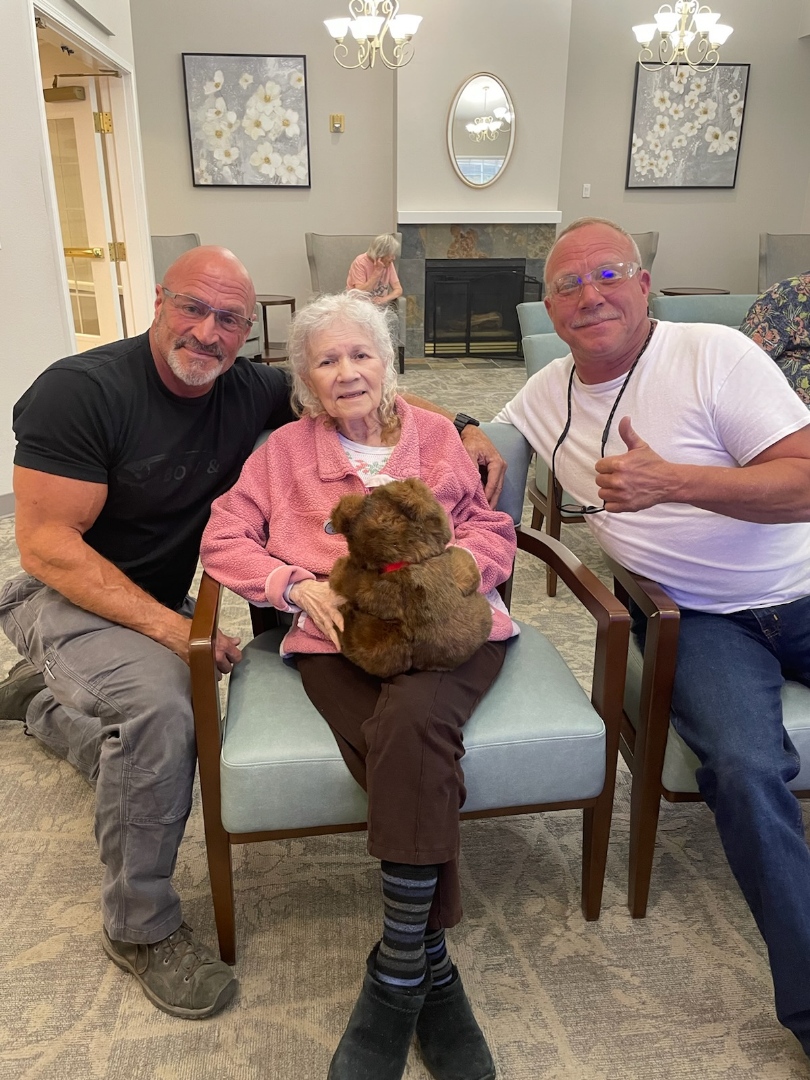Madness descending
Published 12:00 am Sunday, April 13, 2014

- Thinkstock
‘Don’t come near me!” the young man lying on a gurney shouted. Dr. Jory Goodman calmly observed the agitated 23-year-old as he entered the tiny room in the emergency department at a hospital in Culver City, Calif. The patient was, Goodman noted, sunburned and unshaven.
He clearly had not showered in days, and his rumpled T-shirt was stained with sweat. A middle-aged man and woman introduced themselves as the patient’s parents.
Their son had a history of manic depression, the mother explained. Since his diagnosis four years earlier, he had seen many doctors and tried a dozen psychiatric medications. None of them worked. Some even seemed to make him worse.
Her son’s current psychiatrist was tapering him off the five medications he was taking. And the plan was to start a new regimen once the drugs cleared his system.
But a week ago, he went completely wild. He stopped eating and sleeping. He spent one night destroying his bedroom, throwing everything — books, computer, CDs, furniture, pictures — into the center of the floor.
The next day he started running a crazy circuit in the house and outside. In the front door, through the house, then out the back. He ran for hours, bumping and sliding against doorways, walls and furniture.
His mother tried to stop him — she grabbed at him, trying to slow him down — but each time he shook her off roughly and kept going. Sick with worry, she did something she’d never done before: She called the sheriff.
Committed
The sheriff assessed the devastated household and took the son to a psychiatric holding area for observation. There, he was so out of control that at times it took six or seven people to restrain him. The next morning, he was taken to a psychiatric hospital. The aggressive behavior continued, and none of the medicines they used to try to calm him seemed to work.
After three days, he was released into his parents’ care. He wasn’t a danger to himself or others, and the hospital wasn’t required to hold him.
Desperate, they contacted his doctor, who made a few calls and then instructed them to take their son some two hours away to Alta Hollywood Hospitals (now called Southern California Hospital at Culver City) to see Dr. Jory Goodman, an excellent psychiatrist and an old friend. He would figure out what was going on with their son, if anyone could. And so, the mother told Goodman,here they were.
Sedatives That Don’t Sedate
Goodman watched the young man as his parents talked. He’d already been given powerful sedatives to quiet him, and at times it seemed as if he were about to fall asleep. But just as his eyes would begin to close, he’d erupt with expletives and strike out before sinking again into an uneasy quiet.
Goodman asked if their son had any medical problems. None really. He smoked a lot, cigarettes and marijuana. He had some abdominal problems, and last year he was given a diagnosis of irritable bowel syndrome. He also had back pain sometimes. Otherwise he was pretty healthy.
Goodman looked at the agitated man on the gurney, and then turned back to the parents. “I don’t think your son has bipolar disorder at all,” he said abruptly.
An unusual doctor
Over the course of Goodman’s 30-plus-year career in psychiatry, he had made something of a name for himself as a doctor who could figure out puzzling patients. For this young man who had psychotic symptoms but didn’t respond to antipsychotic medications, Goodman considered the possibility that he did not have a psychiatric disease. “I strongly suspect,” he told the parents, “that your son has some type of porphyria.”
The porphyrias are a group of inherited disorders characterized by episodes of debilitating back or abdominal pain, often accompanied by psychiatric symptoms that do not respond to most psychiatric medications. The drugs sometimes make the symptoms worse.
The patient’s father dismissed the diagnosis immediately: “He’s already been tested for that. He doesn’t have it.”
“He hasn’t really been tested for it until I test him for it,” Goodman shot back. It’s an easy test to mess up, he said. Happens all the time.
Goodman started the process of looking for a medical cause for the patient’s madness. He ordered tests for porphyria, giving explicit instructions on how the samples had to be handled for the tests to be accurate. The blood, urine and stool must never be exposed to light. Then the samples were to be sent to a special lab. Goodman also tested the patient for other possible causes of psychiatric symptoms. Street drugs can cause psychosis. Heavy-metal poisoning, from lead or arsenic or mercury, can as well. Deficiencies of B12 or folate, disorders of thyroid hormone and certain types of seizures can produce a variety of psychiatric manifestations.
The first set of tests was unrevealing. Finally, a couple of days later, one of the tests for porphyria suggested an abnormality. The rest of them had to be repeated because they weren’t done properly. Although that single test result wasn’t enough to make a definitive diagnosis, Goodman decided to start treatment when the patient turned violent again.
A blood problem
Porphyria is a rare genetic disease that develops in patients born without the machinery to make certain essential body chemicals, including heme, an important component of hemoglobin. When the body is exposed to certain drugs and environmental stimulants — alcohol, tobacco, marijuana, certain prescription drugs, or stress and sunlight — it tries to produce the essential chemicals but can’t. It ends up producing dangerous levels of the chemical precursors to heme, known as porphyrins. The excess porphyrins injure tissues throughout the body, but especially the nervous system, which causes the terrible pain and psychiatric symptoms that characterize the disorder. This patient was exposed to many of these triggers: He’d been taking antipsychotic medications, drinking alcohol and smoking tobacco and marijuana. He’d been in the sun. He’d stopped eating and sleeping, physiological stressors that can cause porphyria to flare.
A miraculous drip treatment
Attacks of porphyria can be treated either with an artificial version of heme, which is expensive and difficult to obtain, or with high doses of intravenous glucose, which temporarily stops the production of porphyrins. Once the young man’s treatment with glucose began, the effect was remarkable. As the sugar flowed into his system, the shouting, the cursing, the struggling stopped. His face relaxed. His mother watched in amazement as he transformed back into the son she remembered. After half an hour, the young man turned to her and said, “I don’t remember the last time I felt this good.” The pain in his back and abdomen was gone. The snarling anger that had been his daily companion for months, maybe years, vanished.
Porphyria cannot be cured. To manage the disease, patients must focus on avoiding those things that trigger the production of porphyrins. After the glucose treatment, the patient was eager to learn how to avoid future attacks. He began to eat and sleep regularly. He quit smoking and drinking. He eliminated all the medications he could. Eventually he felt nearly back to normal.
“This has changed my life more than I thought anything ever would,” the patient told me recently. He’s planning to start working — something he hadn’t been able to do — and he’s hoping to go back to college in the fall.
Goodman said this was the 19th patient in whom he’d diagnosed porphyria. He’s proud of his diagnostic abilities. He told me that some of his patients liken him to the curmudgeonly diagnostician on TV, Dr. Gregory House. “I’m irritable,” he said. “I’m opinionated. I can be blunt. And I’ve got the limp. The only real difference? I’m not addicted to drugs.”
— Lisa Sanders, M.D., writes the Diagnosis column for The New York Times Magazine.






